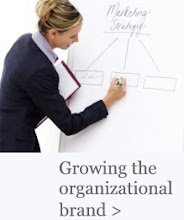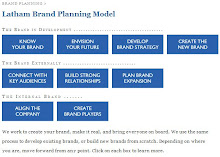
BP isn't hiding this. Video from the ocean floor
is available on the BP website through multiple
cameras
The world doesn’t have a “BP” problem.
The world has an enormous-oil-spill-growing-larger-by-the-day problem.
However.
As per usual, the U.S. media, in persistent attack-dog mode, is looking for smoking guns, bad decisions, news anywhere, practically anything that can make a hugely tragic situation even more hugely tragic, despite the efforts of people who are trying to fix the problem. Perhaps that’s what the press does.
Elected and appointed U.S. officials are vowing to “keep their boot on BP’s neck”, whatever that means, whatever it is designed to achieve, and whatever effect it is meant to have. Perhaps that’s the kind of thing elected and appointed officials say in an election year.
Other voices, including Lamar McKay, number one BP executive in the United States, have been doing everything they can to speak clearly and plainly throughout the catastrophe. Mr. McKay routinely says what he thinks and believes, and candidly shares his company’s perspective while explaining the engineering and scientific challenges that confront his operational teams.
Coast Guard Admiral Thad Allen, National Incident Commander, and Rear Admiral Mary Landry, Commandant of the New Orleans Coast Guard district, are equally plain spoken.
The intelligence, candor and demeanor of these officers, corporate and military, reminds us that crisis management takes multiple skills. You must manage the crisis. You must explain to the world what you are doing to solve the problem. And you must accept the noisak that comes from Washington and the media, yet deal with it equitably. This takes individuals who are informed, aware and concerned, who speak candidly and plainly, and who mean what they say.
Under enormous pressure from events on the ocean floor and from a world focused on this event, this is exactly what Mr. McKay and Admirals Allen and Landry are doing. Could you do it better?
Nevertheless, BP recently decided that we need to hear from corporate officers of an even higher order, notably group chief executive Tony Hayward, based in London, who is now in New Orleans and speaking to the media. His contribution today affirmed to us he is serious about resolving the issue in the Gulf – and we can absolutely believe it – he says, “because I want my life back.”
Well, most of us are more interested in the plume on the ocean floor and what Mr. McKay and his team are going to try next than we are about Mr. Hayward’s life and leisure.
Just another reminder that crisis teams must be chosen from people who can say the right things, at the right moment, and do the right things, whoever they are.
Drilling happens
Oh, and by the way, all of us drive cars. We use oil. We use petroleum products. Therefore, we need drilling. Let us replace oil with better, cleaner, safer fuel, as soon as possible, by any means possible, preferably sooner. But today, oil runs our life.
And the fact is, producing oil for our lives is an amazingly incident-free industry. Spills happen. Ships run aground. And it's bad. Yet it happens extraordinarily infrequently, given the number of producing wells around the world, the amount of oil they bring to the surface, and the tonnage that is shipped from one country to another around the globe.
In a similar way, the Cameron Iron Works blowout preventer is one of the world’s most successful pieces of heavy-duty engineering. There are thousands of these 400-ton devices in service in oil fields around the world. They rarely fail. So rarely, in fact, you could probably say they are fail-proof. Yet we give no credit for that. We just go ballistic when they fail us. We didn’t even know these inventions existed until an event like this happens.
As consumers, frankly, we have our heads in the sand about oil. We ignore the engineering activities (and the inherent risks involved) that make it possible for us to drive to the grocery store to buy bread, milk and baby food. Yet we are frightened of nuclear. We hate coal. We think solar makes houses look ugly. We are totally ignorant about energy and how most forms of energy are produced.
In fact, we are babies.
Take our cars away, we cry.
Ask us to support a new energy initiative, or support a new way to solve the energy problems, or move energy issues forward in a productively new way, our eyes glaze over.
We should grow up.
Maybe then we can face reality, get serious about energy, and address the manifold issues that shape our energy future – and the lives of our children and grandchildren – in a rational way.
That would be something to see.



